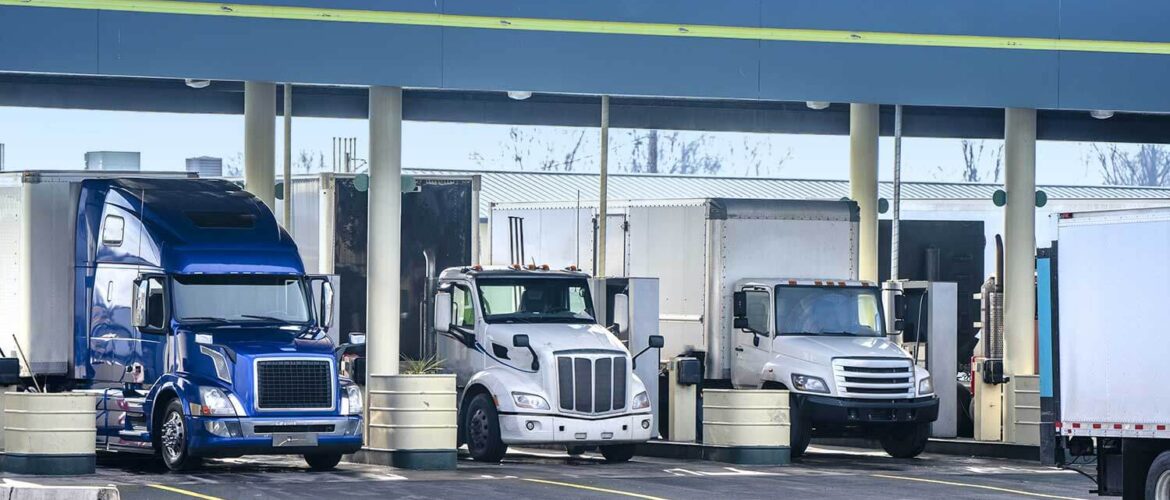As a fleet owner-operator, fuel consumption is one of the most expensive costs for your business. Teaching your drivers how to practice fuel conservation can lead to long-lasting savings so you can invest in bigger, better things. The trucking industry is known for its thin profit margin, so saving money in any way possible such as reducing the cost of fuel should be a top priority. And teaching your drivers about fuel conservation can secure bottom-line savings.
Truck Maintenance
When trucks are well-maintained, they use less fuel. Keeping your trucks in peak condition minimizes fuel consumption, reducing the cost of fuel for your business. Some ways to optimize your truck’s maintenance include:
Preventative Maintenance: With preventative maintenance, little things such as regular oil changes, lubricating the chassis, and checking and filling all fluid levels increase the life of the truck, improving fuel economy and minimizing consumption. Keeping track of when these items need to be checked can make a nig difference in the life of a truck.
Decrease the Truck’s Weight: The more weight a truck carries, the more fuel it consumes. For every extra 100 pounds of weight in the vehicle, the fuel economy decreases by one to two percent. Removing excess weight from your trucks is one way to practice fuel conservation.
Tires: When tires have less air, it can have a detrimental impact on fuel consumption. Softer tires can reduce a truck’s mileage by 10% or more. Fleet managers need to invest in tire sensors and telematics to get actionable data that alerts you when tire pressure is low. Being able to stay ahead of truck issues such as low tires can ensure you take care of things before they become a bigger problem.
Improved Routing
When drivers don’t plan their routes or use traditional GPS systems, they are likely to spend more time on the road, increasing their fuel consumption. GPS technology has become more advanced with new, better options that find faster routes and avoid accidents and construction. Trucker Path is a go-to app within the industry and helps drivers find a number of things to help them maximize uptime, including truck stops, parking, weigh stations, truck washes, and more.
Better Driving
How drivers drive on the road determines how much fuel is consumed. Studies have shown that every 5 mph over 65 mph results in a 7% decrease in fuel economy. And a truck traveling at 75 mph consumes 27% more fuel than one going 65 mph. There are technology applications for fleet managers to get real-time data of how fast their drivers are driving so you can teach them to slow down to minimize fuel consumption, reducing the cost of fuel.
Decrease Engine Idling
When trucks idle, they consume more fuel. Idling causes fuel to burn without using it to travel any distance, which is a waste of your company’s valuable time and money. Idling can be a cause of being stuck in traffic, accidents, or stopped by construction. Many fleets have found that truck idling is one of the main reasons for increased fuel consumption with their drivers. There are telematics that give in-depth insight to fleet owner-operators about idling. If it’s determined that most of your drivers waste time unnecessarily burning fuel, you can look into a better GPS application that helps drivers avoid idling on the road.
Fill Up at Low-Cost Truck Stops
Filling up at cheaper truck stops can save substantial amounts of money spent on diesel fuel. However, many truckers may still decide to fill up at the first diesel pump they see. There are GPS applications that will locate the best fuel prices – especially when traveling long distances. GasBuddy is an example of a helpful app with several features to maximize savings on the road, including locating the best stop, price increase notifications, and a trip cost estimator.
Be Efficient when Driving
To save on fuel consumption, truck drivers need to be efficient when they’re on the road. For instance, when filling up at a truck stop, they should also use that time to use the restroom or purchase any food and beverages. Being proactive when driving ensures that less fuel is used out on the road.
Also, while braking is an essential part of driving, consistently braking forces the truck to slow down, meaning it takes more fuel to get it back up to speed. To reduce the amount of time spent braking while also staying safe, drivers should leave more distance between themselves and the vehicles in front of them, so they won’t have to brake as often.
Stay At the Highest Gear
Trucks get you get the most power for acceleration in the lowest gear – which is why all vehicles start there. But fuel consumption will increase when you stay at lower gears for extended periods of time. The best way to maximize fuel efficiency is to drive at the highest gear available. When a driver goes at a faster rate while in low gears, fuel can be consumed up to 45% faster.
Join the TCI family
At TCI Transportation, we are dedicated to serving the trucking industry by providing the latest equipment, drivers, management, and cost-effective tech solutions. If you want to stay up to date with the latest trucking tips and information, sign up for our email newsletter to have leading industry news sent straight to your inbox.












